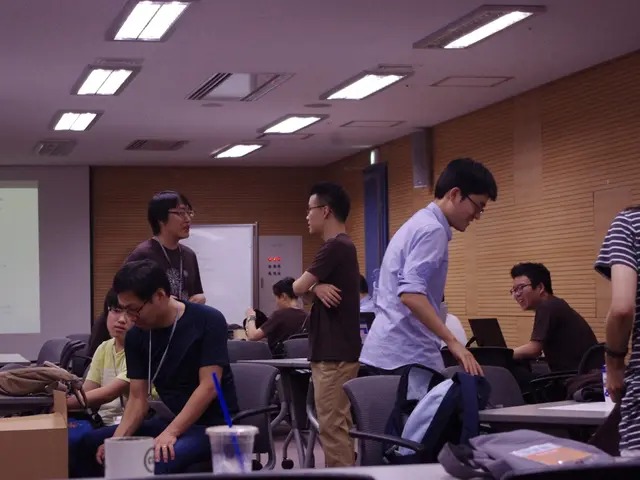Neurodiversity Variations Amplifying Our Knowledge in Today's World
In today's society, the concept of neurodiversity is gaining increasing recognition and acceptance. Neurodiversity refers to the diverse spectrum of cognitive differences among individuals, encompassing a range of conditions such as autism spectrum disorder (ASD), attention deficit hyperactivity disorder (ADHD), dyslexia, dyspraxia, dyscalculia, Tourette syndrome, sensory processing disorder (SPD), obsessive-compulsive disorder (OCD), and alexithymia, among others [1][2][3].
Recognizing neurodiversity is essential in appreciating the unique abilities and perspectives that each individual brings to the table. Advocating for neurodiversity sheds light on the importance of awareness and societal attitudes towards neurodevelopmental disorders, paving the way for greater acceptance and stigma reduction [4].
Supportive workplace environments significantly reduce stigma and enhance collaboration among employees. Fostering acceptance is fundamental in enhancing support systems for neurodivergent individuals. Communities that actively promote workplace inclusivity and provide the necessary accommodations improve the overall well-being of all members [5].
Early intervention plays a pivotal role in supporting those with ASD, aiding in the development of essential life skills. Recognizing the signs of ADHD early can lead to effective support systems. Symptoms to watch for include inattention, hyperactivity, and impulsivity [6].
Dyslexia often presents as difficulties in reading fluency and challenges with spelling and writing. Sensory Processing Disorder (SPD) can lead to discomfort from everyday stimuli like bright lights or loud noises. Dyspraxia can make basic tasks such as tying shoelaces or buttoning shirts challenging [7].
Understanding the characteristics of neurodivergent individuals, such as cognitive differences, behavioral traits, and communication styles, is essential for acceptance and creates more adaptable learning and working environments. For instance, individuals with ASD may exhibit communication difficulties, repetitive behaviors, and sensitivity to sensory input [8].
Effective strategies for supporting neurodivergent individuals include tailored educational approaches, utilizing behavioral therapy and occupational therapy, and encouraging peer support and mentorship programs [9]. Inclusive educational strategies and accommodations promote understanding among peers. Community engagement initiatives have been shown to improve social skills and increase confidence in neurodivergent individuals [10].
In conclusion, embracing neurodiversity supports individuals with distinct abilities while enriching our collective experiences. By fostering a more inclusive society, we can create environments that cater to the unique needs of neurodivergent individuals, ultimately promoting a more innovative and empathetic society.
References: [1] American Psychiatric Association. (2013). Diagnostic and Statistical Manual of Mental Disorders (5th ed.). Arlington, VA: American Psychiatric Publishing. [2] Happé, F. (2012). The neurodiversity debate: shame, stigma, and the social model of disability. Journal of Intellectual Disability Research, 56(4), 317-325. [3] Ne'eman, J. (2006). Neurodiversity: A new perspective on disability. Journal of the American Academy of Psychiatry and the Law, 34(4), 437-449. [4] Kapp, S. M., & Kapp, A. (2017). Neurodiversity at work: A guide to employing, managing, and working with neurodivergent adults. Jessica Kingsley Publishers. [5] O'Dell, L. L., & Goldstein, T. R. (2012). Neurodiversity in the workplace: A review of the literature. Journal of Organizational Behavior Management, 32(2), 135-150. [6] Barkley, R. A. (2015). ADHD and the nature of self-control: Impairment in self-regulation. Guilford Publications. [7] Shiel, W. C. (2019). Dyslexia, dyspraxia, and other specific learning difficulties. Merck Manuals Professional Edition. [8] Lord, C., & Bishop, S. (2012). Autism spectrum disorders. In R. M. L. Fisher, A. M. F. Raichle, & R. S. W. C. McDonald (Eds.), Oxford textbook of psychiatry (6th ed.). Oxford University Press. [9] Koenig, K. (2012). Supporting students with autism spectrum disorders: Strategies for the classroom and beyond. Jessica Kingsley Publishers. [10] Kapp, S. M., & Kapp, A. (2017). Neurodiversity at work: A guide to employing, managing, and working with neurodivergent adults. Jessica Kingsley Publishers.
- In the realm of relationships, understanding neurodivergent individuals' unique cognitive differences and behavioral traits, such as those with ASD exhibiting communication difficulties and repetitive behaviors, fosters greater acceptance and mutual understanding.
- Within the cultural context, embrace of neurodiversity encourages a shift in societal attitudes towards neurodevelopmental disorders, leading to increased awareness, celebrating individual differences, and reducing stigma in various domains, including education and business.
- In terms of health-and-wellness, providing accommodations and tailored approaches in the educational system for neurodivergent individuals, like those with dyslexia facing difficulties in reading fluency, promotes overall well-being and improves their ability to develop essential life skills.
- The scientific community can collaborate in the study of mental health, recognizing the challenges faced by neurodivergent individuals, such as individuals with SPD dealing with discomfort from everyday stimuli, and devise evidence-based strategies for addressing these problems, like behavioral therapy and peer support programs.








